Level Up your LinkedIn: 8 Job Search Tips
When considering your career transition, the most accessible and most affordable way to find your next opportunity is through LinkedIn. It is the world’s largest professional network, with over 1 billion members in more than 200 countries and territories. Users can connect with past colleagues, recruiters, prospective hiring managers, HR directors and fellow professionals in their field. When proficiently utilized, you can use LinkedIn for almost anything. Connect and strengthen your professional network with these eight tips.
Tip 1: Turn Off Sharing Profile Edits: Before updating your LinkedIn profile, turn off the settings that share your profile edits with your network. This way, your connections won’t receive alerts about each change you’re making. To turn off these notifications:
- Go to Settings & Privacy.
- Select the Privacy tab at the top of the page.
- Click on “Sharing Profile Edits.”
- Toggle the switch to “No.”
Tip 2: Recommendations: When pursuing recommendations for your LinkedIn profile, reach out to your trusted business contacts and offer to reciprocate with your own recommendation. If possible, reach out specifically to those with a large following. In any business, connections are key! That said, you will need more than one. Having only one recommendation tends to raise more questions than answers. As a best practice, aim to have at least three recommendations.
Tip 3: Optimize Your LinkedIn Headline: Optimizing your headline will encourage recruiters to click on your profile when it appears in search results or a group update email alert. Carefully review your headline to ensure every word serves a purpose, either for SEO (search engine optimization) or to highlight what you offer and why a recruiter should be interested in learning more about you.
Tip 4: Recruiter Radar Ready: Recruiters often check their “Who’s Viewed Your Profile” page to look for a potential candidate and client interest in their business. Researching recruiters on LinkedIn and viewing their profiles is an effective way to grab their attention, especially if you have a compelling LinkedIn headline that piques their interest. If they have an open position that suits you, they will likely reach out through Linkedin or email if listed in your contact information. Even if they can’t help immediately, becoming an interesting candidate might prompt them to send a connection request, keeping you in mind for future opportunities.
Tip 5: Network, Network, Network: Use the platform for what it excels in, connecting with those in your industry. If you use the free version, bypass paywalls by joining groups with targeted connections. This will allow you to connect and message them directly. Groups are also a great way to build professional relationships. Interact regularly by commenting or liking within the discussions. Connections can form simply from someone appreciating your input, viewing your headline and then visiting your profile. As mentioned earlier, you can also follow up on interesting discussions by privately contacting participants. This approach effectively expands your network, whether for a job search or a broader networking strategy.
Tip 6: Engage with Recruiter Updates: This is a quick and easy way to get noticed by recruiters and serves as an effective icebreaker for direct interactions. Recruiters, like anyone else, appreciate engagement with their content. Commenting thoughtfully on their original posts or amplifying their updates by sharing them can make a positive impression and demonstrate your genuine interest.
Tip 7: Research: Create a list of companies you’re interested in. Check their LinkedIn company pages, post frequency and engagement and follow them. Your insights about their operations and industry can be invaluable during future interviews.
Tip 8: Think Long-Term: Connect with individuals who can support your long-term career goals. Envision where you want to be in 5-10 years. By networking with industry professionals and recruiters now, you will set yourself up for future career opportunities. With this in mind, don’t focus solely on senior contacts; the junior connections you make today could hold influential positions when you’re ready for your next transition. LinkedIn is about cultivating relationships, and while addressing your current needs is crucial, long-term thinking can significantly impact your career growth.
Navigating LinkedIn can be overwhelming and even discouraging at times. Our biggest piece of advice is to keep going. Cultivating your LinkedIn community will influence more than your current job transition; it is an excellent place to keep up with industry trends and advice. LinkedIn is a tool to help you reach your career goals and the goals of those around you. If you want extra support, consider adding a career coach to your team. For a self-instructive route, consider our online roadmap called My Career Navigator (MCN). It is the one-stop shop for the training, tools and tips candidates need to stand out from the competition. Gain a competitive advantage with our support. For more information, contact us today.
Related Posts:

